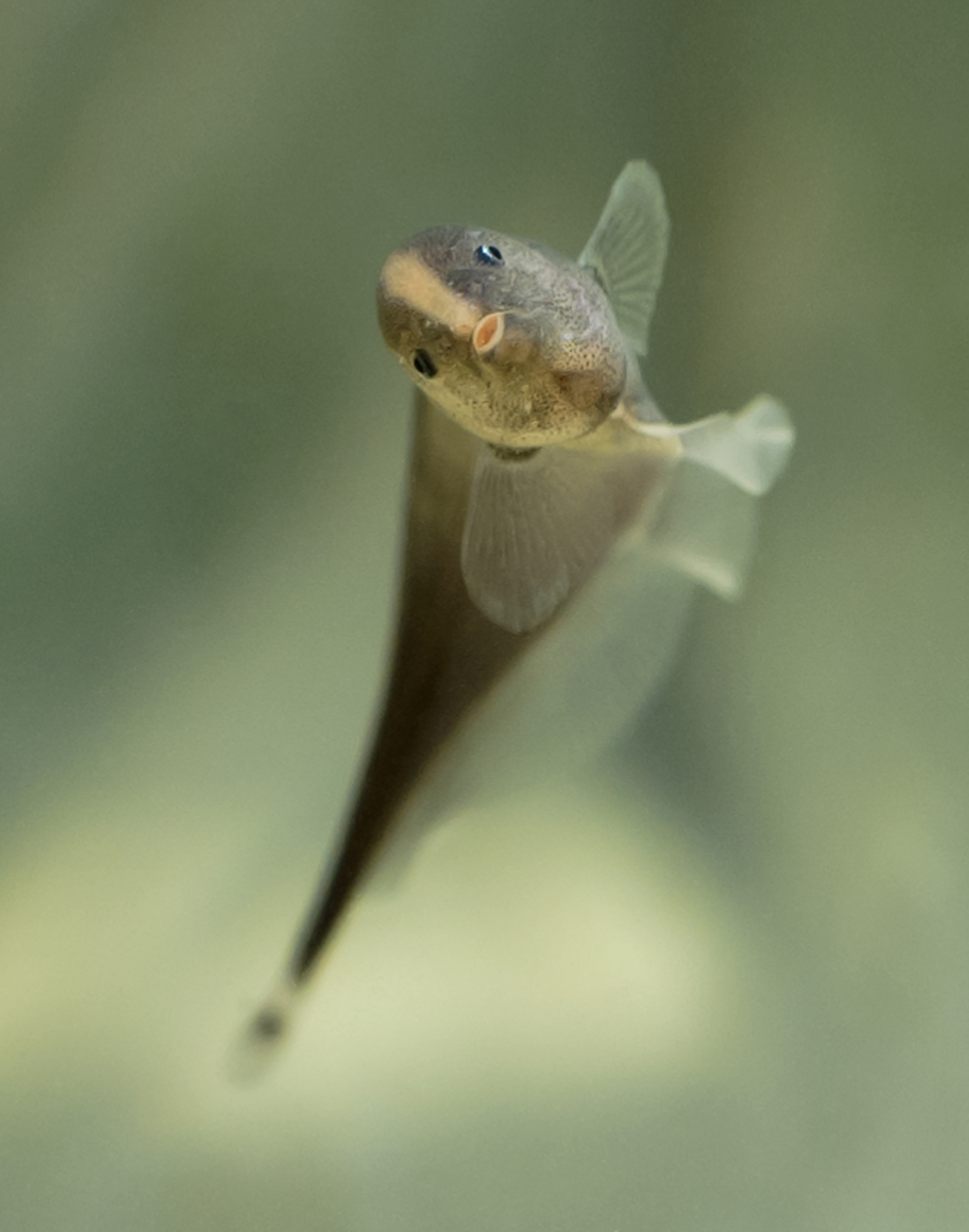Press Releases Archive
28.05.2018
The electric whispers of the ghostly knifefish
University of Tübingen neurobiologists eavesdrop on the nighttime activities of Apteronotus rostratus in its jungle habitat
Knifefish do it at night. With electricity. These nocturnal freshwater fish from Central and South America use tiny electrical signals to navigate, communicate and procreate. Using an electrode grid they developed themselves, Tübingen neurobiologists Professor Jan Benda and Dr. Jörg Henninger listened in on the shy brown ghost knifefish (Apteronotus rostratus) in its natural habitat, a stream in the Panamanian jungle. The research team led by Benda and Henninger, along with their colleagues from Berlin’s Humboldt University, are the first to document the brown ghost knifefish’s mating behavior at home and over a long period of time. Up until now, the fish were almost exclusively investigated in laboratory tanks. The study has been published in the latest issue of the Journal of Neuroscience.
Hearing whispers - Jörg Henninger measures the electrical signals of the knifefish using an electrode lattice in a stream in Panama. Photo: Jan Benda
Knifefish are at home in the tropical streams of Latin America. Smaller cousins of the electric eel, they have a special organ which produces weak electrical discharges. And with electrical receivers distributed over their entire bodies, the brown ghost knifefish can detect the smallest change in their surroundings even in pitch darkness. They can perceive plants, stones, prey and other fish. But this sixth sense is especially useful when it comes to communicating with other brown ghost knifefish.
The fish have been intensively investigated ever since their electrical characteristics were first discovered in the 1950s, with a special focus on how nerve cells process information from sensors and translate it into targeted action. Many of the knifefish’s brain structures are similar to mammalian brain structures. “If we understand how they work in the fish, we will have understood a lot about mammal brains as well,” Jan Benda explains. Yet, he adds, little is known about the knifefish’s natural lifestyle: “They are active at night and spend the daytime hidden in tangles of roots or between rocks. You rarely ever see them.”
Benda and Henninger’s electrode grid enabled them to record the electrical activity of all the fish in an area of approximately four square meters. Working with Professor Rüdiger Krahe of the Humboldt University and with scientists from the Smithsonian Tropical Research Institute in Panama, they deployed the grid in a small stream in Panama.
In his doctoral thesis, Jörg Henninger identified the individual fish by their electrical fields, reconstructed their movements and filtered out their electrical communication signals. “The results revealed an exciting and completely new world of electrical communication,” Henninger says. Some of the most impressive scenes involved courtship behavior. A male sent out hundreds of chirps in a few minutes – trying to convince a female to lay an egg. Finally, the female answered, and signaled her egg-laying with one big chirp. Other males in the area were usually – but not always successfully – driven off by the courting male.
Surprisingly for the researchers, the mating signals were so weak that they barely activated the fishes’ receptors – a kind of electric whisper. Previous studies in the laboratory did not investigate the neural processing of such signals. Future work will examine the neural mechanisms for detecting these weak signals. This may help to understand the basic mechanisms used to detect and classify weak or ambiguous signals. “Our findings show how important it is to quantify natural sensory stimuli if we want ot understand how the brain works,” Henninger says.
Publication:
Jörg Henninger, Rüdiger Krahe, Frank Kirschbaum, Jan Grewe, Jan Benda: Statistics of natural communication signals observed in the wild identify important yet neglected stimulus regimes in weakly electric fish. Journal of Neuroscience. 7 May 2018, 0350-18.
DOI: doi.org/10.1523/JNEUROSCI.0350-18.2018
Contact:
Professor Dr. Jan Benda
University of Tübingen
Institute of Neurobiology – Neuroethology
Phone +49 7071 29 74573
jan.bendaspam prevention@uni-tuebingen.de
Eberhard Karls Universität Tübingen
Public Relations Department
Dr. Karl Guido Rijkhoek
Director
Antje Karbe
Press Officer
Phone +49 7071 29-76789
Fax +49 7071 29-5566
antje.karbe[at]uni-tuebingen.de
https://www.uni-tuebingen.de/en/university/news-and-publications.html


